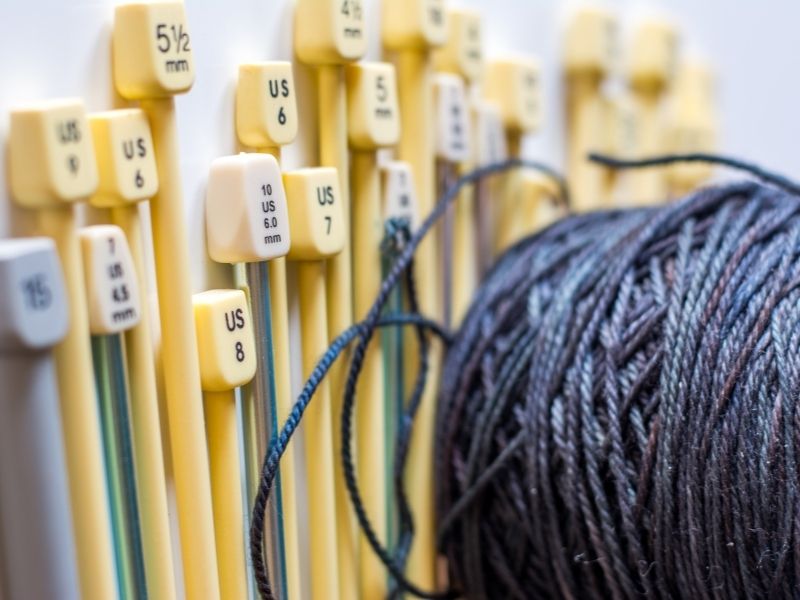
Knitting Needle Conversion Chart {FREE Printable}
If you are just learning to knit, one thing that may stump you is how to figure out which size knitting needles to use. It’s important to understand the various knitting needle sizes and which projects they are best used for. A handy knitting needle conversion chart may be your go-to guide as you get acquainted with the wonderful world of knitting. Keep reading for more information on needle sizes, then grab my FREE printable for a knitting needle size chart…
This post may contain affiliate links. That means if you click and buy, I may make a commission at no cost to you. Please see my full disclosure policy for more details.
——————————————————————————————————————–
Do you wish you could really learn how to knit beautiful things?
Click here to master basic knitting skills in under 2 weeks – even if you are a complete beginner, intimidated by mistakes, and lack design coordination!
KNITTING COURSE —>
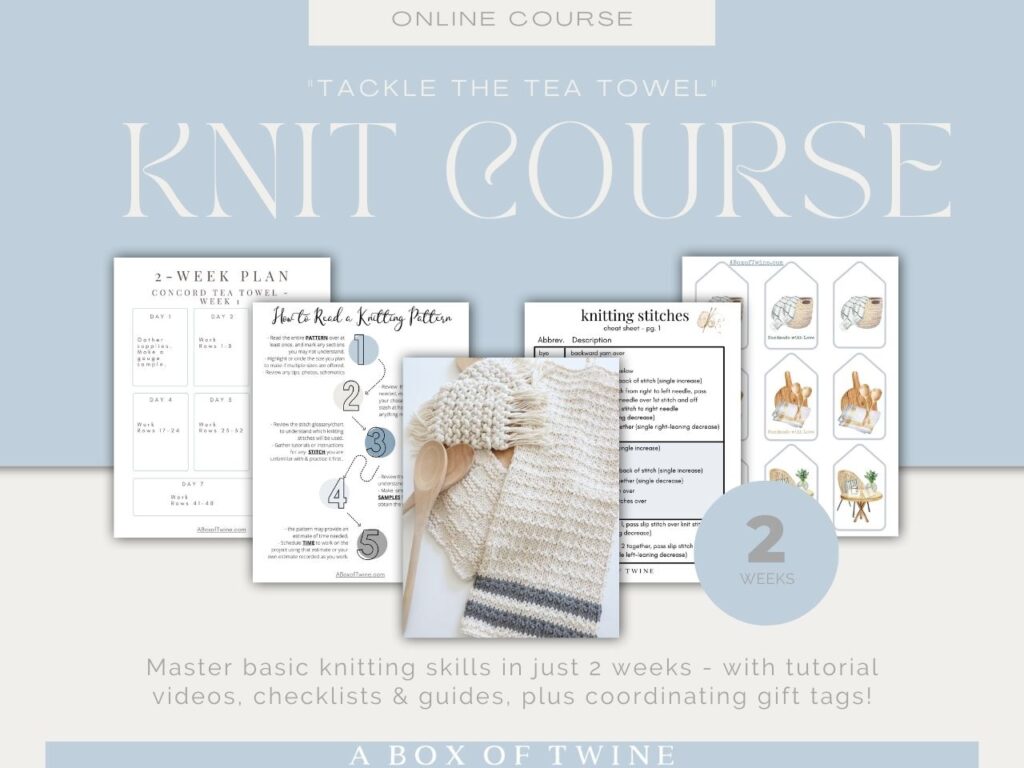
——————————————————————————————————————–
How do I know what knitting needles to use?
When you just starting out knitting, it may be tempting to just grab any knitting needles and any yarn and get to it. You may think that needle and yarn sizes don’t matter much, as long as you like the color of the yarn. (I may have been guilty of this thought process in the past). 😊
You may also have purchased a knitting book or digital knitting pattern, then wondered how to interpret the ‘needle size’ you are instructed to use. This can be especially challenging if the size is listed as a metric, US or UK number.
I can personally recall this feeling of overwhelm when I was re-learning knitting as an adult. I was pregnant with my oldest son and trying to knit a blanket. The needle size choices seemed daunting!
How on earth can you decipher what they are asking in these patterns?
It is helpful to have a knitting needle conversion chart on hand to understand the various terms used for the same needle.
Knitting Needle Size Chart
The first thing you will need to understand about knitting needles is that they have different identification numbers. Some numbers are United States (US) based, while another set is United Kingdom (UK) based.
The US knitting needle sizes run from low numbers identifying smaller needles to higher numbers identifying wider needles. In contrast, the UK knitting needle sizes run from higher numbers identifying small needles to lower numbers identifying wider needles.
Good news! Both US and UK needles can also be identified using metric numbers. The metric number distinguishes the actual diameter of the needle in millimeters.
A useful knitting needle conversion chart will list all 3 of these identifying numbers so that you can interpret which size you need for a project.
KNITTING NEEDLE CONVERSION CHART PRINTABLE
I have this helpful FREE printable for a knitting needle conversion chart to assist you in deciphering needle sizes. If a knitting pattern calls for a size in metric or UK numbers and you are using US needles, you can quickly scan the chart to determine the translation to US needle size.
Conversely, if a knitting pattern you want to try has US needle sizes listed, but you always use metric or UK sized needles, the translation can work the other way. You would use the knitting needle size chart to translate from US to mm or UK.
Another BONUS feature of this chart is that it gives you the common YARN WEIGHT recommended for various groups of needle sizes. Smaller needles work best with lighter weight yarns, whereas wider needles work best with heavier weight yarns.
You can find the chart in my KNITTING SUPPLIES CHEATSHEETS freebie for email subscribers:
This chart will help you answer a wealth of questions, such as those listed below…
KNITTERS ASK: How do I convert knitting needle sizes?
When you are new to knitting, you may find all the various knitting needle sizes confusing. I have listed some common beginner knitter questions below. I hope the answers will help you along your knitting journey.
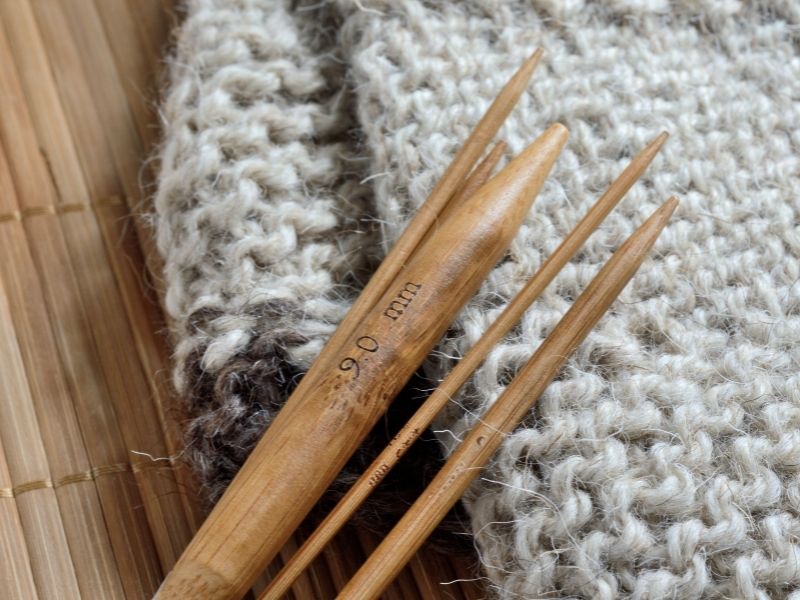
First, some questions on how to read this free chart:
What size is a 3.5mm knitting needle?
Here’s an example – a pattern calls for a 3.5 mm knitting needle, and you want to know if you already own this size as part of your US needle collection. Simply locate the 3.5 mm under the ‘Metric’ column on the chart, then look in the next column under ‘US’ size numbers and you will find the number ‘4’. (You will also notice that there is no corresponding ‘UK’ size number for the 3.5 mm).
What is size 10 knitting needles in mm?
A pattern may call for a size 10 knitting needle to be used in the project. You would need to know if this pattern is written for US or UK knitters. The US size 10 knitting needle is 6mm diameter, whereas the UK size 10 knitting needle is 3.25mm (much smaller). Find out which size is expected for this pattern to avoid making a significant error using the wrong needle!
What size knitting needle is 12 mm?
This is another example of looking closely at the pattern. If it calls for a 12 mm knitting needle, you will need a US size 17 needle. The UK does not have an equivalent size. This is quite a wide needle, usually reserved for working on Jumbo sized yarn.
Next, you may have questions on the best needles for beginners:
What is a good size knitting needle for beginners?
In general, knitting needles for beginners range from 4mm to 5mm. You will find these sizes nestled in the middle of the conversion chart. They work best with the most common ‘Medium’ yarn weight. When you are just starting out trying to knit stitches, you don’t want to struggle with tiny yarn and needles, nor jumbo yarn with huge needles.
What is the best size knitting needle?
The answer to this question may vary for each knitter, but the most common size knitting needles are 4.5mm to 5.5mm. These needles are often used with the most common yarn weight – ‘Medium’. They are also easy to manage. Beginners may also prefer a longer length in these sizes, as they are easier to practice holding many stitches on.
What about knitting needle length?
Knitting needles also come in various lengths for each size. The most common length for straight needles is 35 cm (about 14”). You can also find needles in shorter lengths to use for scarves and other narrow projects.
Circular needles are the best to use for lengthy projects, such as blankets or wide shawls. These needles are connected via a wire and used for knitting projects in the ‘round’. The wire holds the multitude of stitches being worked. They come in quite a variety of lengths to suit your project.
Check out these straight and circular knitting needle sets to get started…
How do I know my knitting needle size?
You may also own knitting needles (passed down from your sweet grandmother?) that do not clearly indicate a size. Perhaps the writing on the needle itself has worn off or is too difficult to decipher.
There is a way you can determine the size of a knitting needle in hand – use a KNITTING NEEDLE GAUGE TOOL! These handy dandy gauge tools come in a variety of materials and styles. Each gauge tool has holes that you can slide your needle through. The hole that matches the exact fit of your needle will indicate the size of that needle. Genius!
These lovely wood knitting needle gauge tools below have both US and metric sizes indicated.
Knitting Patterns and Knitting Needles
You may also be wondering, what knitting needles are best for which projects? I like to use my free printable conversion chart as a guide. The chart shows that knitting needles in the smaller mm diameter are best used for lace, superfine, and fine weight yarn projects. Examples of these are lace work, socks, and baby attire/accessories.
Moving up the size chart, the best projects for 3.75mm to 5mm needles are those using Light or Medium weight yarn. You will find a plethora of patterns using these size needles for common projects like hats, sweaters, mittens, scarves, wraps, home goods, etc.
The 5.5mm and up needles are best for bulky and jumbo yarn projects. Examples of these are as thicker sweaters, chunky hats, blankets, baskets, pillows and such.
Find some of my beginner-friendly knitting patterns using a variety of needle sizes here…
I hope my free printable for a knitting needle conversion chart will help you navigate the choices for various size needles. It is my genuine desire to be a cheerleader for beginner knitters, and any time I can mitigate any confusion is a welcome opportunity.
I would love to hear if this knitting needles size chart has helped you – let me know in the comments!
If you are interested in learning more about knitting supplies, check out my LIST OF KNITTING ESSENTIALS.
Visit the KNITTING category on my blog or ETSY SHOP to find more knitting goodies!
===> Remember to PIN for later! <===
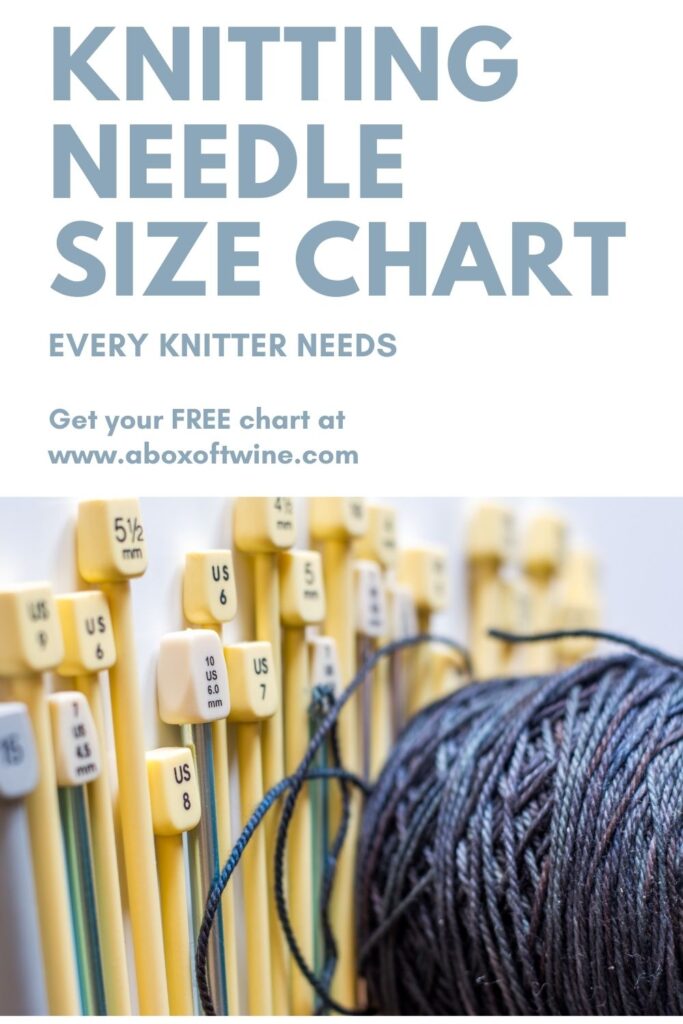



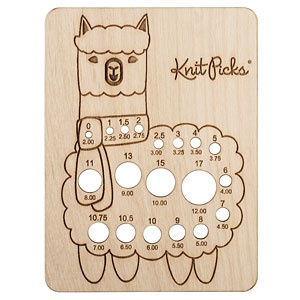


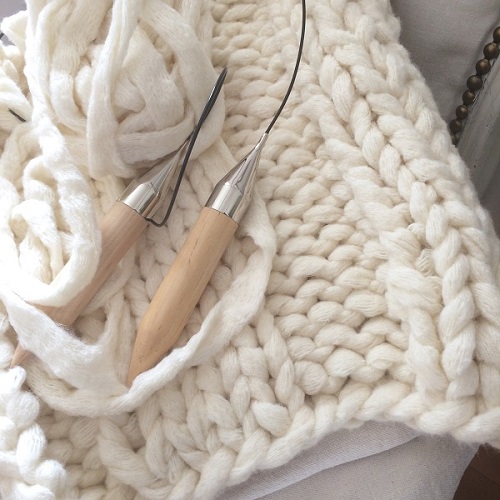
4 Comments
Jan Ferguson
I signed up hoping to get the free knitting needle conversation chart. Will you be sending it to my email, as I can’t find the link on your site. Thanks in advance. Jan
Susan
Hello Jan,
I just checked my email system and it indicates that you are indeed a new subscriber to me, and that 3 emails have been sent to your email address.
Have you checked your spam/junk folder to see if they ended up there?
You may have to mark my email address ‘susan@aboxoftwine.com’ as a valid contact. I can resend if you are still having trouble, just let me know.
Thanks, Susan
Anne Kala
Hi. Anne Kala from Zimbabwe. I was hoping to see this conversion table. I see new patterns using the words worsted yarn weight. I have never heard of that before. In zim we use ply. I also can’t subscribe and pay because we don’t have bank cards that work outside this country. So thanks for free offer .
Susan
That’s great, Anne! I am so glad that the conversion charts will help you. It is interesting how different countries have various names/sizes for the yarn and needles. Happy knitting!